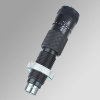Charlie1022
Member
I just bought an RPR 6.5 Creedmoor and a regular set of RCBS dies which I have used for use with very good results. What is the advantage of the precision dies?

As the other guys said, a lot of it is the ease of adjust-ability, whether it's neck tension or seating depth.
I just bought a set of Whidden dies with a click adjustable neck sizing die to adjust for shoulder bump:
https://www.whiddengunworks.com/product/click-bushing-full-length-die-set/
Not a "needed" item, but really came in handing for adjusting the amount of sizing on my 6mm SLR. Normally I'll set dies for FL sizing, then back off using die shims. When each "click" equals .001" in sizing, it simplifies adjustment. The Whidden guys also make custom seating stems by bullet, IF they don't have one for your favorite, you can send a bullet to them and they'll make it.
With any of the adjustable micrometer stuff it really is easier switching components or testing various variables.
Yes, Particular if your using different bullets. I put a sticky note inside the storage box a long with notes on the reloading data,
jmorris, You never fail to impress.
Question for those who have extensive experience with measuring/testing these things: It seems to me that a micrometer-adjustment seating die isn't likely to be any more consistent than a non-micrometer die in seating bullets (assuming similarly good fit between seating stem and bullet profile), but that by virtue of having a marked and measured adjustment mechanism, it is easier to dial in a desired change with less trial-and-error... and easier to return to a prior (recorded) depth in the future. Am I correct?
